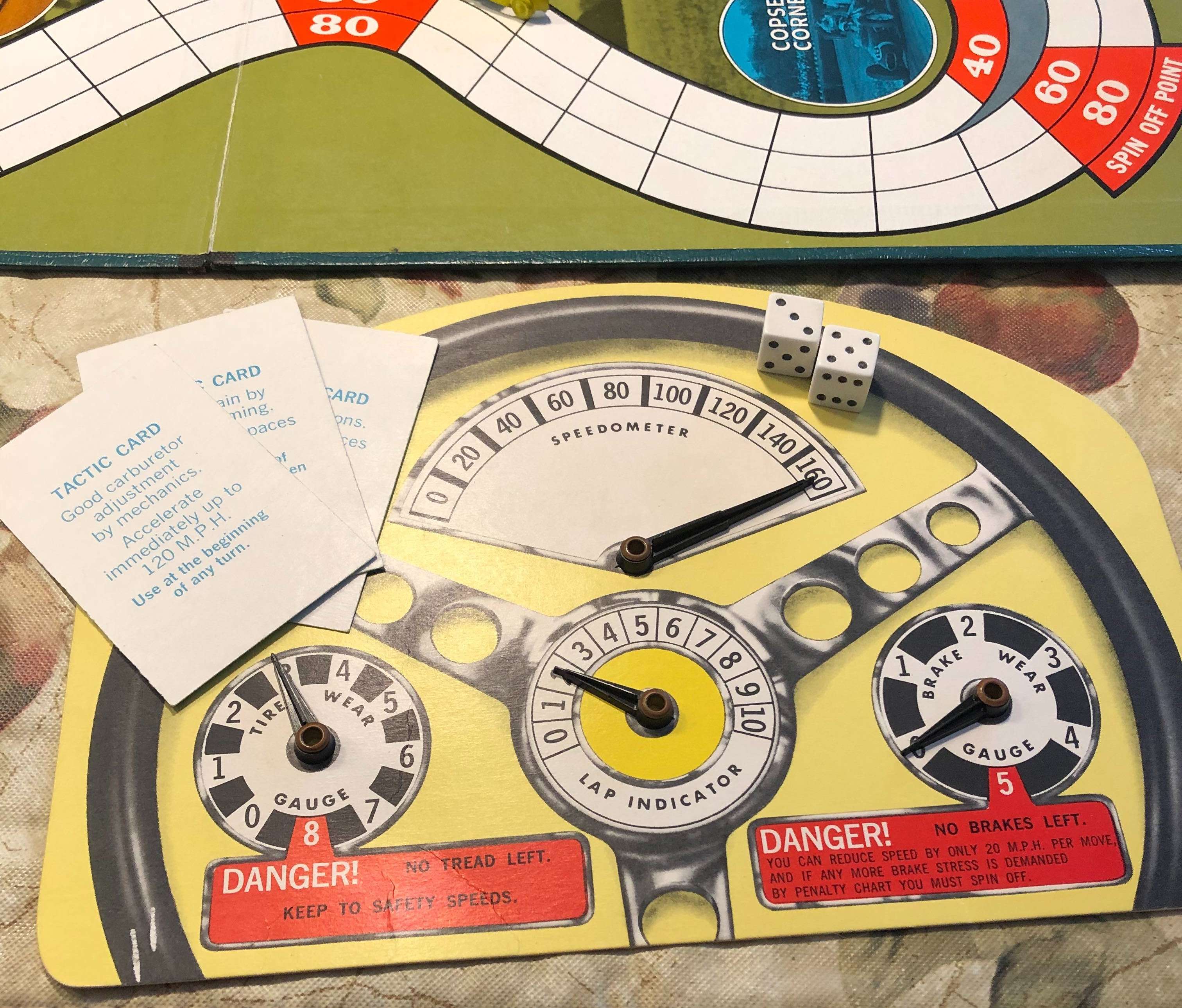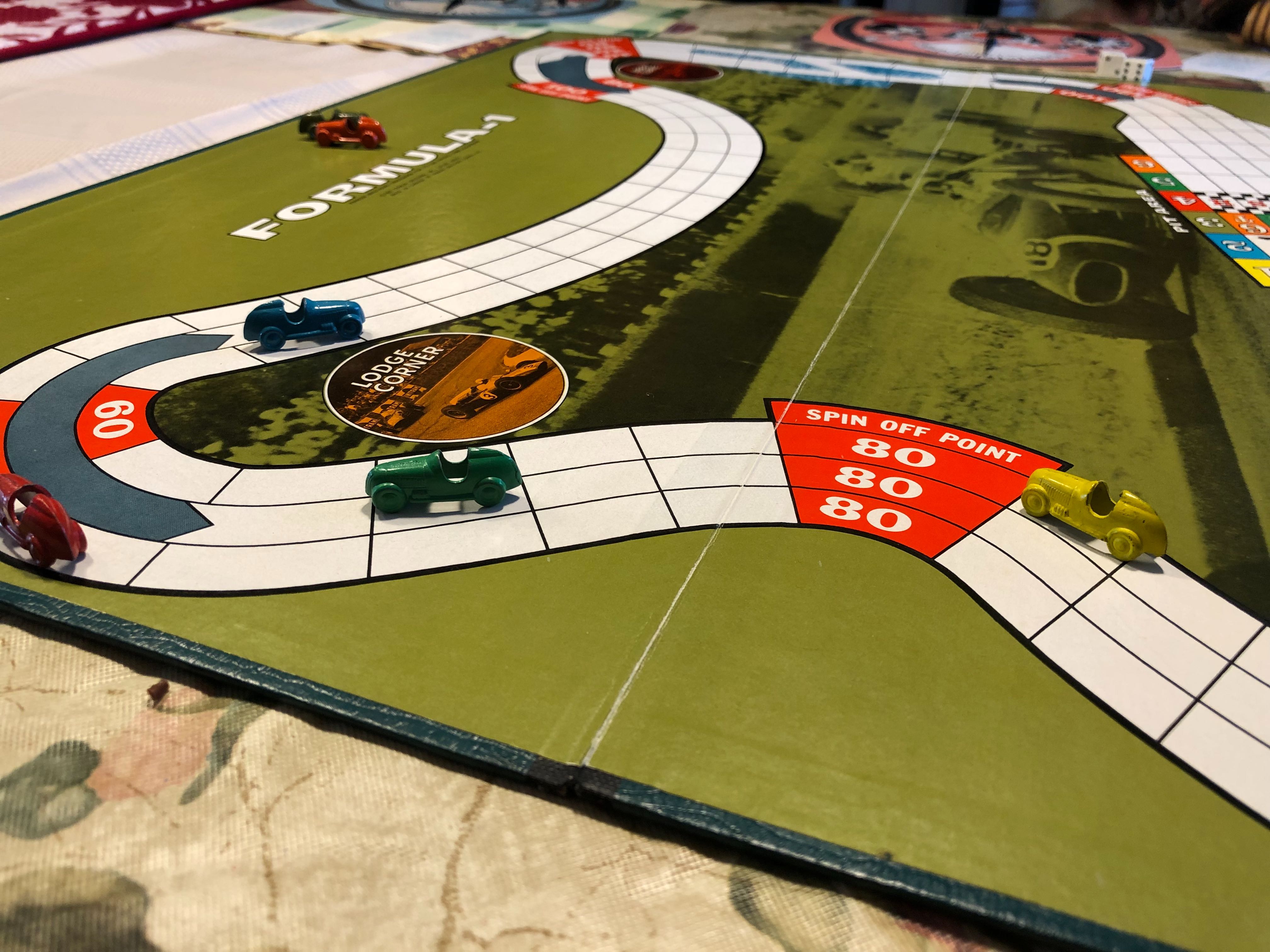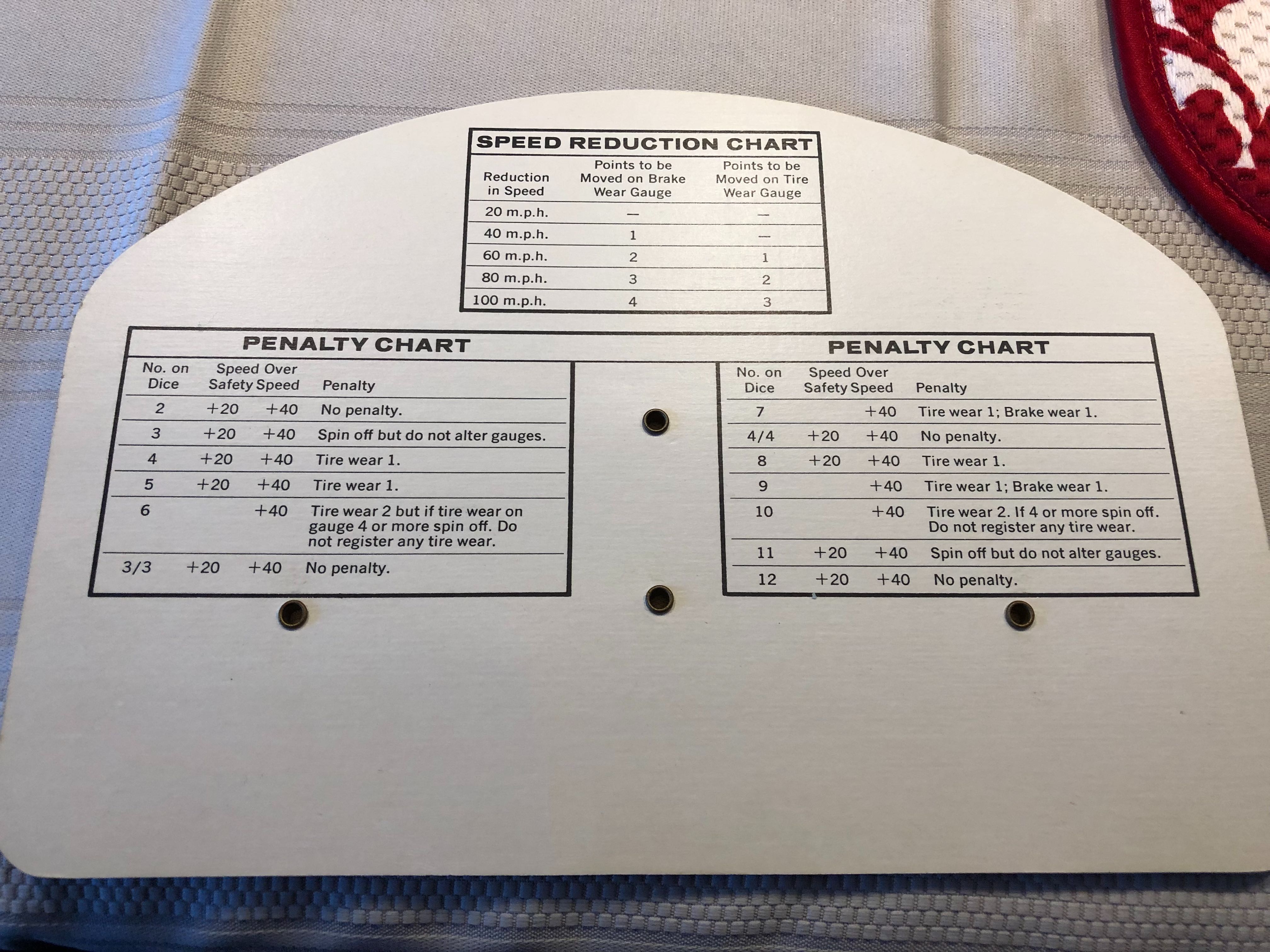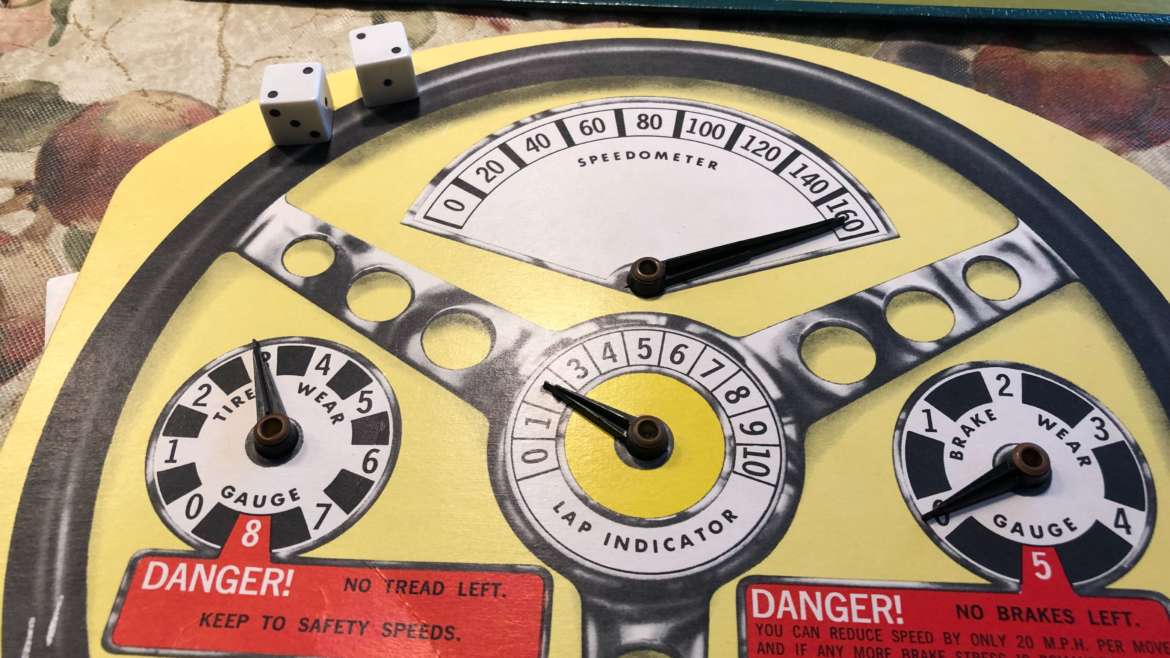Formula 1
- Runtime: 30-120 minutes
- Players: 2-6 players
- Mechanics: Area movement
We got ahold of a vintage treasure this week, the 1964 classic “Formula 1”. Originally published in 1962 by Waddingtons, this Parker Brother’s edition was published a few years later for the American market.

In this game, players take on the role of a formula one driver. Each player has a player board, styled like a race car dashboard, to track the wear on their tires and breaks, track how many laps they have left, and set their speed for the turn. At the beginning of each turn, you can increase or decrease speed by up to 60 mph. For every 20 mph of speed you are traveling, you move your little metal car one square forward on the track, either in the same lane or to an adjacent lane. Each player also gets a stack of tactic cards. You can either hand them out randomly or distribute the same set to everyone. Allowing this kind of customization of tactics increases replayabilty, an important feature of any board game.

Players must navigate curves and try to block their opponents as they race around the track. Curves in the track have speed limits, and if you hit a curve going too fast, you must roll the dice and consult the table on the back of your player board for a penalty. Going around a curve at +20 or +40 mph over the limit results in tire/break wear or worse, a spinout. (+60 mph or more results in an automatic spinout.) Spinning out is almost always bad as you have to stop and reduce your speed to zero. As you approach a curve you have to make a choice, reduce your speed and navigate the curve, or speed through and roll the dice.

The Good Stuff:
We really enjoyed how easy it was to learn this game. The mechanics are simple and easy to teach, and we seemed to get the hang of the strategy after the first turn or two. Although the mechanics are simple, it seemed that each choice was deep and strategic. The basic strategy boils down to choosing when to take big risks versus when to play it safe. If you are in the lead, you’ll typically drive more conservatively, unless someone is hot on your heels. When breaks and tires are wearing thin, you may even want to intentionally spin out to avoid further wear.
The Bad Stuff:
We thoroughly enjoyed the game and found little we didn’t like. Most of the criticisms we had were components related. The game is quite old, after all, and the components definitely felt dated. There’s a lot of blank space on the board that could have been filled with more art or maybe the penalty charts from the back of the player boards (turning over the player boards to consult the charts disrupted the mood). The cars were made of metal, which are pretty cool in their own right, but if we were printing this game today they’d probably be custom wooden pieces.
Final Thoughts:
Speaking of printing this game today, there are a number of other things that could be done to update this design. For instance, the game plays 2-6 players but uses the same board. It seemed that with more players there would be more opportunities for blocking. Adding different boards or adding squares that are off limits in games with smaller numbers of players could fix this. Adding additional boards with different tracks would also increase replay value. Another thing that would make this game more interesting would be asymmetric drivers or cars. One car could be fast but not nimble, or another car could take longer to get up to speed but have a higher top speed.
On balance, this is a great game. After finishing our first play-through, we were ready to start over and play again immediately. With little negative to say about it, we rate it a solid 8 out of 10.

